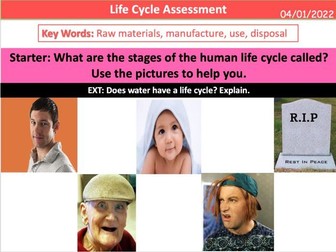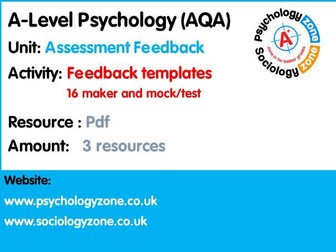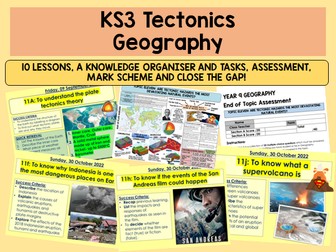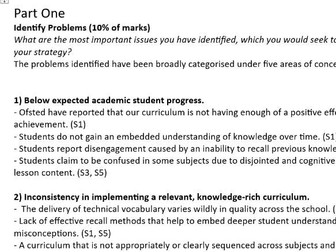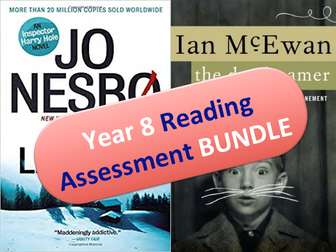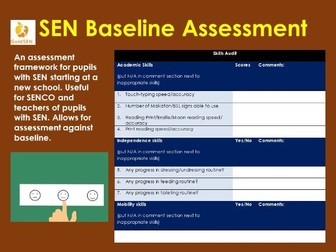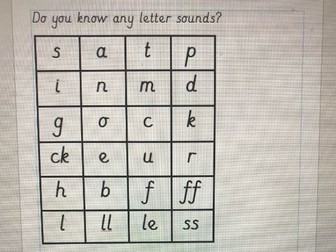Phonics Assessment Grids for Parents
3 different formats for children with varying abilities.
These have been made to stick in reading records to share children’s progress with parents and inform them on what sounds/skills need to be developed.
Phonics Assessment Grid for Parents
4 different formats for children with varying abilities.
These have been made to stick in reading records to share children’s progress with parents and inform them on what sounds/skills need to be developed. Linked to Read Write Inc assessment 3.
GCSE Mark Sheet Assessment Art
The Preview may seem wierd but download format is fine!
Resource details what type of tasks count towards each objective for the Edexcel GCSE Specification in Art and Design.
Students and teacher can in different pens tick the appropriate box- have they completed no work towards, minimal, secure or in depth amount towards that objective.
You can then tally up how many grades you got in each section and therefore clearly see in each AO where students are struggling.
You can then convert the grades on to the grid- so majority of minimal amount would be 2/3 grade. Secure- 4/5/6 and in depth 7,8,9 grades.
There are then four boxes where student and teacher can write in clearly what tasks need to be complete to improve each assessment objective.
Map Skills End of Topic Assessment
An end of unit test for year 7.
Includes all major map skills such as compass points, grid references, scale, longitude/latitude and relief. Also includes mark scheme, self reflection sheet and differentiated. DIRT tasks require foundations textbook or could be adapted to suit.
Life Cycle Assessments
New for the AQA GCSE 1-9 Combined Trilogy Unit ‚ÄėC12 The Earth‚Äôs Resources‚Äô.
Full lessons ready to use straight ‚Äėout of the box‚Äô.
Lesson meets the full criteria for this unit
Similar structure to my other power points following the input - activity - review phasing
Plenary sections for progress checking
Clear learning objectives and outcomes
Modern and engaging layout
Little adaptation needed
Each lesson covers at least an hour of lesson time
38 ppt slides
Please leave constructive feedback :D
undefined
Functional Skills English Initial Assessment
Functional Skills English Reading and Writing Initial Assessment based on Pearson Edexcel criteria. Aimed at post 14- adult learners.
Reading Assessment contains a range of questions from Entry Level to Level 2. Writing Assessment contains three writing tasks aimed at Entry Level 3 - Level 2. Answers and marking criteria included. Also includes a powerpoint providing background to Functional Skills English, a short quiz and icebreaker activity. Takes 1.30 to deliver.
Psychology: Assessment Feedback Templates
Psychology: Assessment Feedback Templates:
16 Marker Essay Questions
Mock Examination
Mark Schemes
Tectonics KS3 10 lessons KO & Assessment
Topic 11 (Lessons are coded)
Taught to Year 9 pupils
11A: Plate Tectonics
11B: Plate Movement (Plate Boundaries)
11C: Constructive Plate Boundaries
11D: Iceland
11E: Destructive Plate Margins
11F: Indonesia
11G: Conservative Plate Margins
11H: San Andreas Fault
11I: Living in Areas of Tectonic Risk
11J: Supervolcanoes
11K: Assessment, Mark Scheme and Close the Gap activity
A Knowledge Organiser and 10 tasks to use as revision.
Reception End of Spring 2 Assessment
Matching statements in our progression document to assess progress over Spring 2 across all seven areas of learning.
NPQSL Summative Assessment Task 49/50 example.
A completed example of the NPQSL SAT from April 2023 with BPN, which was awarded 49/50.
While future SATs will be have different briefs, this example may provide some inspiration and reassurance as to what BPN and other NPQSL providers are looking for in this final part of the qualification.
The brief for this particular NPQSL was related to improving whole-school curriculum and staff CPD.
Assessment for Learning CPD Session!
This CPD session offers an engaging and original approach to introducing or revisiting assessment for learning. Grounded in educational research, this CPD session is interactive, well-structured, and has been successfully tried and tested. The aim of the CPD session is to develop the knowledge, skills, and strategies needed in order to utilise assessment for learning even more effectively in lessons, and it achieves this by embarking upon the following learning journey:
1. Understand what assessment for learning is and why it is effective.
2. Break down the individual components of assessment for learning.
3. Observe and evaluate a model of assessment for learning
4. Collaborate in developing your own assessment for learning strategies.
Included in this pack are: Full PowerPoint presentation, videos for analysis, hyperlinks to Youtube videos, resources for CPD activities, instructions and guidance for trainers/ presenters.
All images and videos are licensed for commercial use, and are cited on the final slide.
Life Cycle Assessment LCA - AQA
Includes and animated powerpoint with starter, tasks and end of lesson quiz + 4 worksheets.
This powerpoint covers the stages of an LCA for paper vs plastic objects and gets students to think about the questions they must ask themselves about each stage of a product’s life.
Tailored for the AQA Chemistry and combined science trilogy specifications.
Kind regards,
Lewis
Bundle
Year 8 Reading Assessments
Two age related reading comprehensions for Year 8. Both fiction and based on Eduqas GCSE-styled Component 1 examination questioning. Useful as a pair: one for a ‚Äúwalking talking mock‚ÄĚ followed by summative assessment.
SEN Baseline Assessment
This resource assesses pupils with an EHCP when they join a new school or education establishment. It records the level that a pupil is functioning at and can help a new school understand the support that they need going forwards (at their new school).
This assessment can then be re-assessed year on year against the initial baseline to demonstrate progress against the baseline and the students entry into a new education establishment (also attached in this document). Always useful when Ofsetd or the LEA needs evidence of a pupils progress.
Reception Baseline Assessment Booklet
I have created a baseline assessment on entry to Reception, because I struggled to find a baseline assessment that matched the new Development Matters document. Therefore, I have used Development Matters, July 2021 to create this document and to look at what we would expect children to be doing when they enter Reception in September, to be 3-4 years secure. I hope this resource helps you too!
Literacy assessment:
Name writing
Word writing (higher achievers)
Letter formation
Any sounds known
Rhyme
Initial sound
Nursery Rhymes
Maths assessment:
Subitising
Oral counting
‚ÄėNumber fingers‚Äô
1:1 counting
Number recognition
Match number and quantity
Shape recognition
Repeating patterns
Colours
More and Less
Student Peer Assessment Mat
Guides students to effectively peer assess. Improves students work and guides teachers to where feedback is required.
For more resources visit This is Geography. Full SoW for all new GCSE specifications - AQA, Edexcel, OCR, CIE IGCSE, Edexcel IGCSE and Eduqas. As well as over 200 lessons for KS3 and KS2. Want something bespoke designing? Email us for further details info@thisisgeography.co.uk
Factors, Multiples and Prime assessment
A powerpoint presentation perfect for starters and assessment for Numeracy! It is perfect to use as a plenary as well to check students understanding of the topic. It has multiple choices where only one answer is correct from (A, B, C and D). Perfect as a whiteboard activity for assessment during observational and Ofsted lessons. You can also use this Red, Green, Amber and White activity where students put up their planners to assess students learning. Following topics are assessed: Factors, Multiples, Prime factors, Prime Numbers, Divisors and Highest common factor
Please leave a review for this resource :) Let me know if it helps you in your lessons.
